
Majestic Copper Canyon: Mexico's Hidden Gem
Discover Copper Canyon: Mexico's awe-inspiring natural wonder, offering spectacular landscapes, rich cultural encounters, and thrilling outdoor adventures.
Copper Canyon is a breathtaking network of six canyons in the state of Chihuahua, Mexico. Larger and deeper than the Grand Canyon, Copper Canyon offers stunning vistas, rugged landscapes, and a rich cultural heritage that will captivate any traveler. The region is home to the indigenous Tarahumara people, known for their incredible long-distance running abilities. Exploring their villages provides a glimpse into their traditional way of life and handicrafts. The best way to experience Copper Canyon is aboard the famous El Chepe train, which winds its way through the canyons, offering spectacular views at every turn. Outdoor enthusiasts will find plenty to do, from hiking and mountain biking to bird watching and horseback riding. Do not miss the Basaseachic Falls, one of the highest waterfalls in Mexico, or the adventure park with zip lines and suspension bridges. Whether you're seeking adventure or tranquility, Copper Canyon promises an unforgettable experience.
Local tips in Copper Canyon
- Take the El Chepe train for the most scenic and comfortable way to explore the canyons.
- Visit the Tarahumara villages to experience authentic indigenous culture and purchase unique handicrafts.
- Prepare for varying weather conditions; the canyon's climate can change rapidly.
- Don't miss the Basaseachic Falls for a breathtaking natural sight.
- Bring sturdy walking shoes for hiking and exploring the rugged terrain.
Majestic Copper Canyon: Mexico's Hidden Gem
Copper Canyon is a breathtaking network of six canyons in the state of Chihuahua, Mexico. Larger and deeper than the Grand Canyon, Copper Canyon offers stunning vistas, rugged landscapes, and a rich cultural heritage that will captivate any traveler. The region is home to the indigenous Tarahumara people, known for their incredible long-distance running abilities. Exploring their villages provides a glimpse into their traditional way of life and handicrafts. The best way to experience Copper Canyon is aboard the famous El Chepe train, which winds its way through the canyons, offering spectacular views at every turn. Outdoor enthusiasts will find plenty to do, from hiking and mountain biking to bird watching and horseback riding. Do not miss the Basaseachic Falls, one of the highest waterfalls in Mexico, or the adventure park with zip lines and suspension bridges. Whether you're seeking adventure or tranquility, Copper Canyon promises an unforgettable experience.
When is the best time to go to Copper Canyon?
Unmissable attractions to see
Cascada de Basaseachi National Park
Explore the breathtaking beauty of Cascada de Basaseachic National Park, home to stunning waterfalls and diverse wildlife in Chihuahua, Mexico.
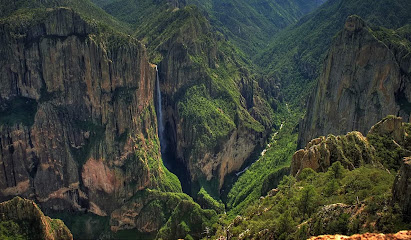
Cascada Basaseachi
Discover the breathtaking beauty of Cascada Basaseachi, one of Mexico's tallest waterfalls, nestled in the stunning landscapes of Chihuahua.
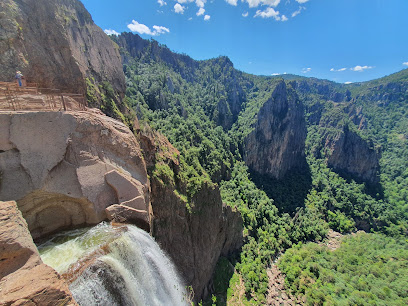
Cañón de Namurachi
Explore the breathtaking landscapes and rich biodiversity of Cañón de Namurachi, a must-visit natural wonder in Chihuahua, Mexico.
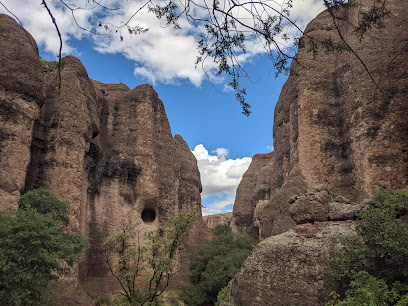
Valle de la fertilidad
Discover Valle de la Fertilidad, a breathtaking hiking area in Chihuahua, Mexico, rich in natural beauty and cultural heritage.
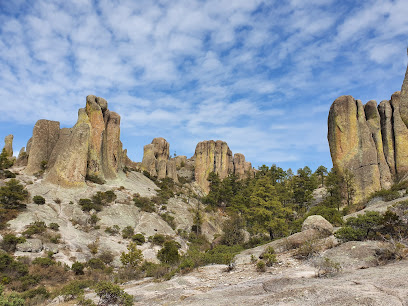
Parque Nacional Cañon de Santa Elena
Explore the breathtaking landscapes and rich biodiversity of Parque Nacional Cañon de Santa Elena, a must-visit national park in Chihuahua, Mexico.

Markets, malls and hidden boutiques
Copper Canyon Adventure Park
Discover adventure and breathtaking views at Copper Canyon Adventure Park, a premier destination for thrill-seekers in Chihuahua, Mexico.
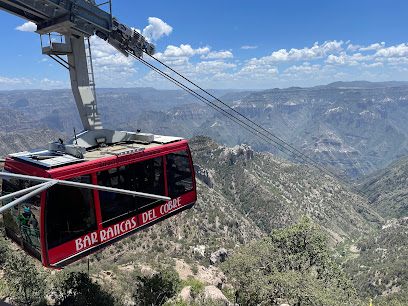
COPPER CANYON BOUTIQUE HOTEL
Discover unparalleled comfort at Copper Canyon Boutique Hotel, your perfect retreat in the heart of Chihuahua, Mexico’s stunning landscapes.

Copper Canyon
Explore the majestic beauty of Copper Canyon, a breathtaking ravine system in Chihuahua, Mexico, offering rich culture and thrilling outdoor adventures.
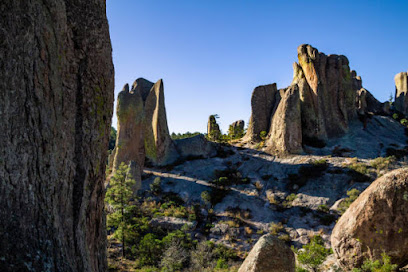
Super Yumis
Explore the flavors of Creel at Super Yumis, your go-to supermarket for fresh produce and local delicacies in the heart of Chihuahua.

Hotel Paraiso del Oso
Experience the tranquility and beauty of Cerocahui at Hotel Paraiso del Oso, your gateway to nature and culture in Chihuahua, Mexico.

Artesanías Misión Creel
Explore the vibrant world of handicrafts at Artesanías Misión Creel, where local artistry meets cultural heritage in the heart of Chihuahua.
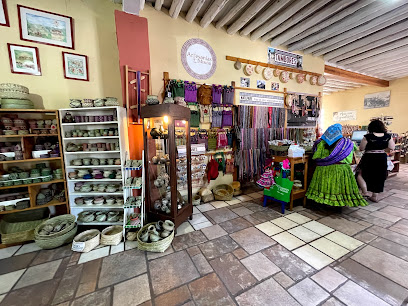
Kino's
Experience the warmth of local coffee culture at Kino's, a charming cafe in Creel, Chihuahua, perfect for tourists seeking relaxation.
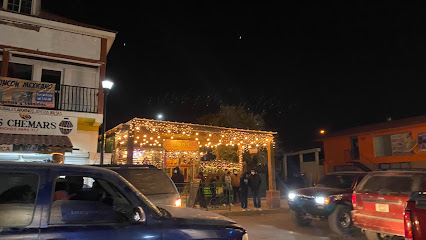
Abarotes Jv2
Discover the flavors of Creel at Abarotes Jv2, your go-to grocery store for local delicacies and essentials.
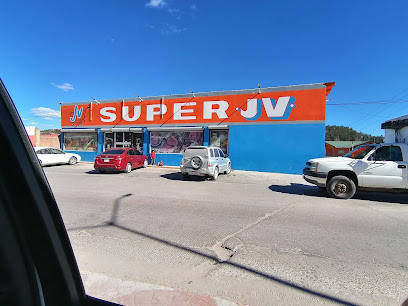
Estacion Creel
Discover the sweet charm of Estacion Creel, a cake shop in Creel, Chihuahua, where delightful pastries meet local flavor in a cozy atmosphere.
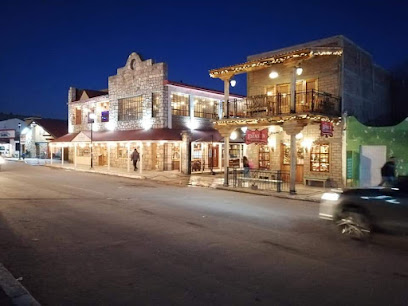
Joy Lingerie & Swimwear store
Shop at Joy Lingerie & Swimwear in Chihuahua for stylish swimwear, lingerie, and handbags, perfect for your beach getaway.
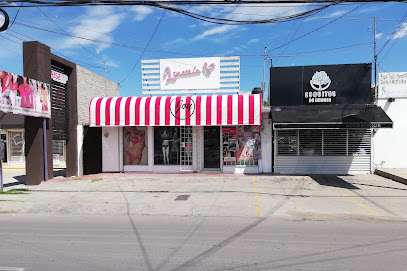
El Mercadito
Discover the vibrant flavors and culture at El Mercadito, Chihuahua's bustling market offering local delicacies and artisanal goods.
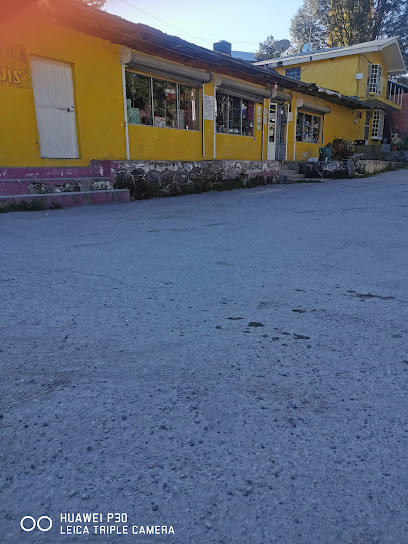
Mirador Kirare Artesanias
Explore Mirador Kirare Artesanias in Chihuahua: A treasure trove of handcrafted goods and local culture awaits your discovery.
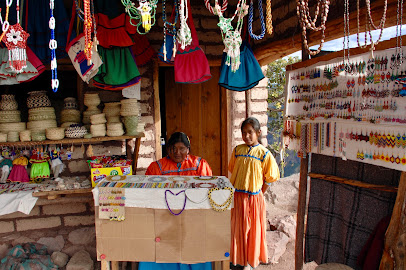
La Popular
Discover the flavors of Chihuahua at La Popular, a vibrant grocery store in San Rafael, offering local products and a taste of Mexican culture.

Fashion Boutique
Explore San Juanito's Fashion Boutique for unique clothing that blends local culture with contemporary style, perfect for any fashion enthusiast.
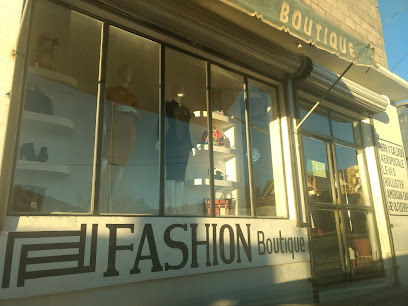
HERBOLARIA
Explore the essence of Mexican herbal traditions at Herbolaria in Creel, a must-visit herbal medicine store for wellness enthusiasts.
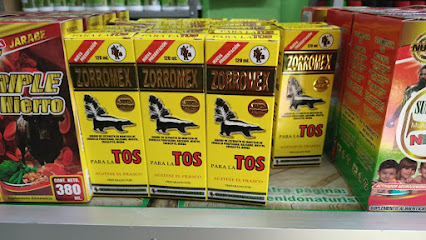
Essential bars & hidden hideouts
Copper Canyon Adventure Park
Experience thrilling adventures and breathtaking views at Copper Canyon Adventure Park in Barrancas del Cobre, Mexico.
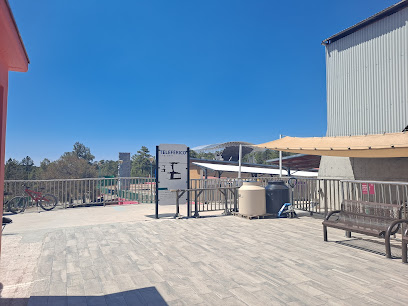
The Lodge at Creel Hotel & SPA
Discover the beauty of Creel at The Lodge at Creel Hotel & SPA, where luxury meets nature in an unforgettable getaway.
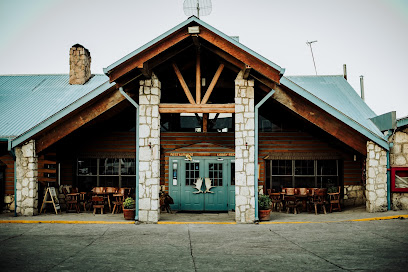
Restaurante Verónica
Discover the rich flavors of authentic Mexican cuisine at Restaurante Verónica in Creel, perfect for breakfast and lunch in a warm, inviting atmosphere.
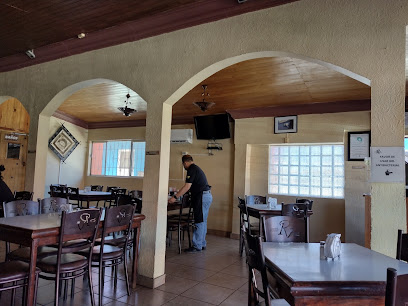
Tio Molcas Restaurant
Discover the rich flavors of Mexico at Tio Molcas Restaurant in Creel, where every dish tells a story of tradition and passion.
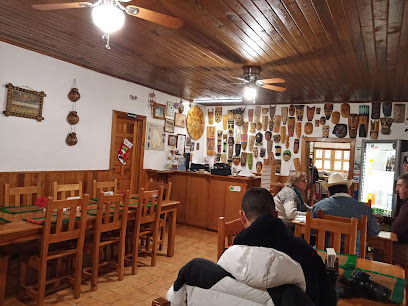
Cervecería Copper Lodge
Experience the best of Creel at Cervecería Copper Lodge, a premier brewery offering artisanal beers and delicious pizzas in a vibrant atmosphere.
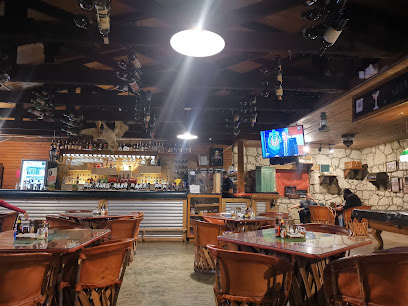
Gabba Gabba
Discover the lively atmosphere and flavorful grilled delights at Gabba Gabba in Chihuahua – a must-visit culinary experience for every tourist.
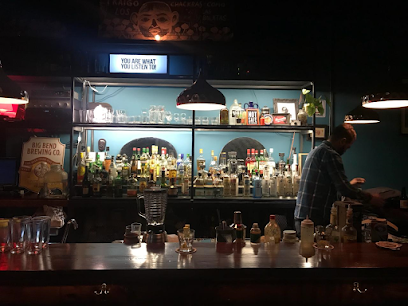
Restaurant Lupita
Discover the rich flavors of authentic Mexican cuisine at Restaurant Lupita in Creel, an unforgettable dining experience for every traveler.

Copper Canyon
Discover the breathtaking beauty and rich culture of Copper Canyon, a natural wonder in Chihuahua, Mexico, perfect for adventure seekers and nature lovers.

Hotel y Cabañas Pueblo Viejo
Experience the charm of Creel at Hotel y Cabañas Pueblo Viejo, your perfect retreat in the stunning Sierra Tarahumara region.

New Sheridan Bar
Discover the lively New Sheridan Bar in Chihuahua, where vibrant nightlife meets exquisite cocktails in a welcoming atmosphere.

Restaurant Bar La Estufa
Discover the rich flavors of Mexican cuisine at Restaurant Bar La Estufa in Creel, a must-visit grill for food lovers.
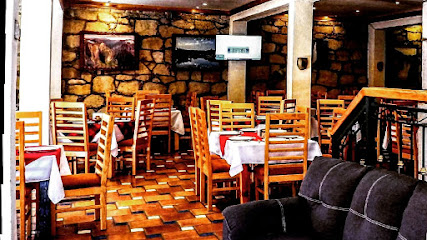
El Meson de García
Experience authentic Mexican cuisine at El Meson de García in Creel, where traditional flavors meet a warm, inviting atmosphere.
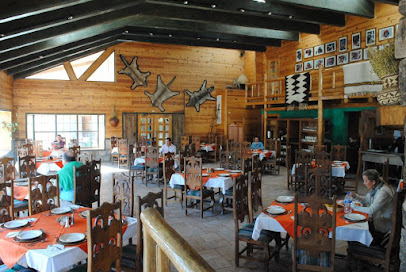
Restaurante Dos Marias
Experience the authentic taste of Mexico at Restaurante Dos Marias in Creel, where every dish tells a story of local tradition and flavor.
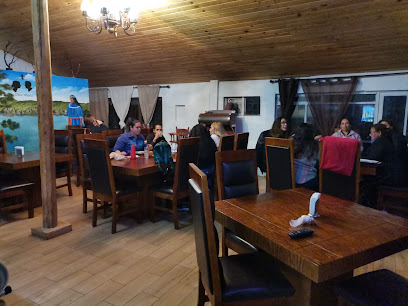
Restaurante El Barranco
Experience the flavors of Barrancas del Cobre at Restaurante El Barranco, a culinary gem amidst stunning landscapes.
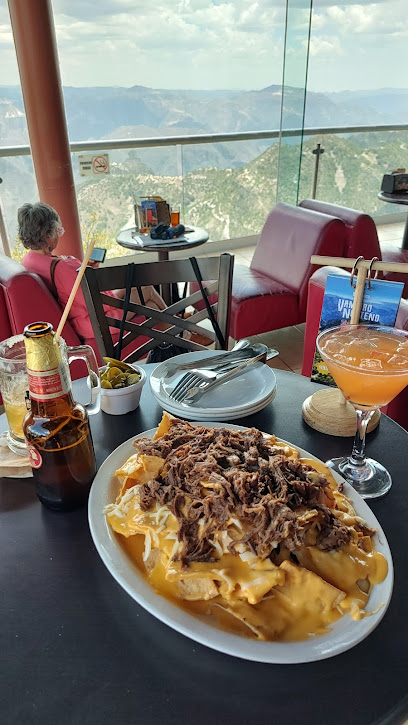
Amigo Bistro & Galeria
Discover exquisite dining at Amigo Bistro & Galeria in Creel, blending fine wines, delightful bistro fare, and a charming beer garden atmosphere.
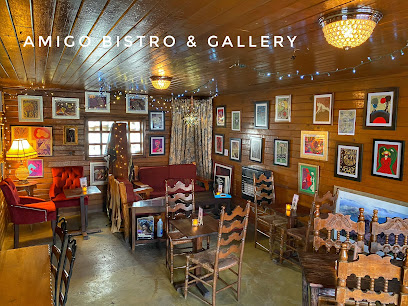
Local Phrases about Copper Canyon
-
- HelloHola
[oh-lah] - GoodbyeAdiós
[ah-dee-ohs] - YesSí
[see] - NoNo
[noh] - Please/You're welcomePor favor
[por fah-vor] - Thank youGracias
[grah-see-ahs] - Excuse me/SorryPerdón
[pair-dohn] - How are you?¿Cómo estás?
[koh-moh ehs-tahs] - Fine. And you?Bien. ¿Y tú?
[bee-ehn. ee too] - Do you speak English?¿Hablas inglés?
[ah-blahs een-glays] - I don't understandNo entiendo
[noh ehn-tee-ehn-doh]
- HelloHola
-
- I'd like to see the menu, pleaseMe gustaría ver el menú, por favor
[meh goo-stah-ree-ah vehr ehl meh-noo, por fah-vor] - I don't eat meatNo como carne
[noh koh-moh kahr-neh] - Cheers!¡Salud!
[sah-lood] - I would like to pay, pleaseMe gustaría pagar, por favor
[meh goo-stah-ree-ah pah-gahr, por fah-vor]
- I'd like to see the menu, pleaseMe gustaría ver el menú, por favor
-
- Help!¡Ayuda!
[ah-yoo-dah] - Go away!¡Vete!
[veh-teh] - Call the Police!¡Llama a la Policía!
[yah-mah ah lah poh-lee-see-ah] - Call a doctor!¡Llama a un médico!
[yah-mah ah oon meh-dee-koh] - I'm lostEstoy perdido
[ehs-toy pair-dee-doh] - I'm illEstoy enfermo/a
[ehs-toy ehn-fehr-moh/ah]
- Help!¡Ayuda!
-
- I'd like to buy...Me gustaría comprar...
[meh goo-stah-ree-ah kohm-prahr...] - I'm just lookingSólo estoy mirando
[soh-loh ehs-toy mee-rahn-doh] - How much is it?¿Cuánto cuesta?
[kwan-toh kwehs-tah] - That's too expensiveEso es demasiado caro
[eh-soh ehs deh-mah-see-ah-doh kah-roh] - Can you lower the price?¿Puedes bajar el precio?
[pweh-dehs bah-hahr ehl pree-syoh]
- I'd like to buy...Me gustaría comprar...
-
- What time is it?¿Qué hora es?
[keh oh-rah ehs] - It's one o'clockEs la una en punto
[ehs lah oo-nah ehn poon-toh] - Half past (10)Las diez y media
[lahs d'yehs ee meh-dee-ah] - MorningMañana
[mah-nyah-nah] - AfternoonTarde
[tahr-deh] - EveningNoche
[noh-cheh] - YesterdayAyer
[ah-yehr] - TodayHoy
[oy] - TomorrowMañana
[mah-nyah-nah] - 1Uno
[oo-noh] - 2Dos
[dohs] - 3Tres
[trehs] - 4Cuatro
[kwah-troh] - 5Cinco
[seen-koh] - 6Seis
[says] - 7Siete
[syeh-teh] - 8Ocho
[oh-choh] - 9Nueve
[nweh-veh] - 10Diez
[dyehs]
- What time is it?¿Qué hora es?
-
- Where's a/the...?¿Dónde está el/la...?
[dohn-deh ehs-tah ehl/lah] - What's the address?¿Cuál es la dirección?
[kwal ehs lah dee-rehk-syohn] - Can you show me (on the map)?¿Puedes mostrarme (en el mapa)?
[pweh-dehs mohs-trahr-meh (ehn ehl mah-pah)] - When's the next (bus)?¿Cuándo es el próximo (autobús)?
[kwan-doh ehs ehl proh-ksee-moh (ow-toh-boos)] - A ticket (to ....)Un boleto (para ....)
[oon boh-leh-toh (pah-rah)]
- Where's a/the...?¿Dónde está el/la...?
History of Copper Canyon
-
Copper Canyon, known as Barranca del Cobre in Spanish, is a network of six canyons in the state of Chihuahua, Mexico. The canyon system was formed over millions of years by the erosion of the volcanic rock by six rivers that merge into the Rio Fuerte. These geological processes have resulted in dramatic cliffs, deep ravines, and breathtaking landscapes that are even larger and deeper than the Grand Canyon in the United States.
-
The Rarámuri, also known as the Tarahumara, are the indigenous people who have lived in the Copper Canyon region for centuries. They are renowned for their long-distance running abilities, a skill that has become part of their cultural identity. The Rarámuri traditionally reside in caves or small huts and are known for their vibrant clothing, intricate weaving, and traditional dances. Their way of life has been adapted to the challenging terrain of the canyons.
-
In the 16th century, Spanish explorers arrived in the region now known as Copper Canyon. The area was explored by conquistadors in search of mineral wealth, particularly silver. The Spanish influence introduced new agricultural practices, livestock, and tools to the indigenous populations. However, this period also marked the beginning of significant cultural and demographic changes for the Rarámuri people due to disease, conflict, and forced labor.
-
The late 19th and early 20th centuries saw a mining boom in the Copper Canyon region. Rich deposits of copper, silver, and other minerals attracted numerous mining companies and workers. Towns like Batopilas and Urique became bustling mining communities. The mining industry brought economic growth but also environmental changes and social challenges, including labor disputes and the displacement of indigenous communities.
-
One of the most significant engineering feats in the region's history is the construction of the Chihuahua al Pacífico Railway, also known as El Chepe. Completed in 1961, this railway connects the city of Chihuahua to the Pacific coast at Los Mochis, traversing the rugged terrain of the Copper Canyon. The railway includes 37 bridges and 86 tunnels and offers passengers stunning views of the canyons. It has become one of the most popular ways for tourists to experience the natural beauty of the area.
-
In recent decades, Copper Canyon has become a major destination for eco-tourism and adventure travel. Efforts have been made to balance tourism with the conservation of the natural environment and the preservation of Rarámuri culture. Activities such as hiking, horseback riding, and zip-lining attract visitors from around the world. The development of sustainable tourism practices aims to ensure that the region's natural beauty and cultural heritage are protected for future generations.
Copper Canyon Essentials
-
Copper Canyon is located in the state of Chihuahua, Mexico. The nearest major airport is General Roberto Fierro Villalobos International Airport (CUU) in Chihuahua City. From the airport, you can take a bus or rent a car to reach the towns of Creel or Divisadero, which serve as common gateways to the canyon. Another popular option is to take the El Chepe train, which runs between Chihuahua City and Los Mochis, providing scenic views of the canyon.
-
Within Copper Canyon, transportation options include the El Chepe train, which offers a leisurely and scenic way to traverse the canyon. Buses and vans are available for local travel between towns like Creel, Divisadero, and Batopilas. For more flexibility, renting a car is an option, though be prepared for challenging driving conditions in some areas. Taxis and local guides can also be hired for day trips and short distances.
-
The official currency in Mexico is the Mexican Peso (MXN). Credit cards are accepted in most hotels and restaurants in larger towns like Creel and Divisadero, but it's advisable to carry cash for smaller establishments and remote areas. ATMs are available in major towns, but it is wise to withdraw sufficient cash before venturing deeper into the canyon.
-
Copper Canyon is generally safe for tourists, but it is essential to stay vigilant. Avoid walking alone at night and be cautious with your belongings in crowded places. Areas like Creel and Divisadero are safe for tourists, but exercise caution in more remote areas and avoid traveling alone. It is advised to stick to well-known tourist routes and use local guides.
-
In case of emergency, dial 911 for immediate assistance. Medical facilities are available in towns like Creel and Divisadero. It is recommended to have travel insurance that covers medical emergencies. For minor health issues, there are pharmacies in larger towns where you can purchase over-the-counter medications. Keep a list of local emergency contacts and locations of nearby hospitals.
-
Fashion: Do wear comfortable and sturdy footwear for hiking and exploring. Avoid overly revealing clothing. Religion: Do respect local customs and traditions, especially when visiting indigenous communities. Public Transport: Do be polite and respectful to fellow passengers. Don’t eat or drink on public transport. Greetings: Do greet people with a friendly 'Hola!' or 'Buenos días.' A handshake is also common. Eating & Drinking: Do try local delicacies such as gorditas and regional cheeses. Don’t refuse food offered by locals as it is considered impolite.
-
Experience Copper Canyon like a local by attending traditional Rarámuri festivals and markets. Engage with local guides who can offer insights into the indigenous culture and history of the region. Visit the thermal springs near Recowata for a relaxing experience. For the adventurous, consider hiking or biking the trails around Creel and Divisadero. Don’t miss the opportunity to take a zip-line tour over the canyon for breathtaking views.
Nearby Cities to Copper Canyon
-
Things To Do in El Paso
-
Things To Do in Las Cruces
-
Things To Do in White Sands
-
Things To Do in Cabo San Lucas
-
Things To Do in Tucson
-
Things To Do in Truth or Consequences
-
Things To Do in Ixtapa-Zihuatanejo
-
Things To Do in Ruidoso
-
Things To Do in Roswell
-
Things To Do in Socorro
-
Things To Do in Midland
-
Things To Do in Chandler
-
Things To Do in Gilbert
-
Things To Do in Mesa
-
Things To Do in Monterrey










